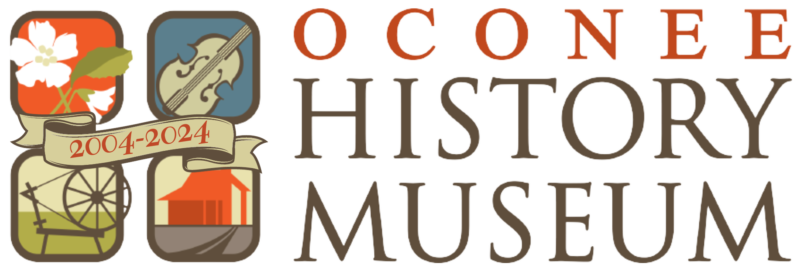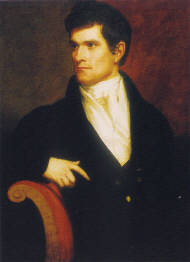
John Caldwell Calhoun was born on March 18, 1782 in Abbeville District, South Carolina. After attending Yale, he entered a political life serving in the SC State Legislature, was subsequently elected to Congress in 1811 and in 1817, was appointed as US Secretary of War. Calhoun became vice president of the United States of America in 1824 under president John Quincy Adams. Elected a second time as vice president under Andrew Jackson, Calhoun would eventually resign from the position in 1832. He was immediately elected back into Congress as a US Senator. Calhoun died in Washington on March 31, 1850 and was buried in Charleston, SC.
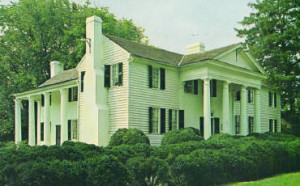
In 1825, John C. Calhoun and his family moved to what is known as Fort Hill near Pendleton, South Carolina. Fort Hill had previously been owned by Calhoun’s mother-in-law. The plantation would eventually become the site of Clemson College.
John C. Calhoun was a supporter of nullification. This idea would grant individual states the right to declare federal law null and void.
“The Union–next to our liberty most dear; may we all remember that it can only be preserved by respecting the rights of the states and distributing equally the benefits and burdens of the Union.”
-John C. Calhoun
13 April 1830
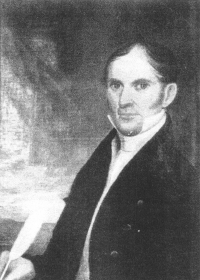
Joseph Grisham [also spelled Gresham] was born in Pickens District on November 17, 1789. Ordained as a Baptist minister in 1838, Grisham is known to have started several Temperance Unions. The names of the town of “West Union” and the community of “South Union” are attributed as two of his Unions. Grisham lived for many years in the town of Pendleton where he was a member of the Pendleton Farmer’s Society. Hoping to retire, Grisham answered an advertisement of the German Colonization Society of Charleston seeking land. After the sale of 17,859 acres to the society, Grisham eventually moved to Canton, Georgia where he died on April 9, 1857.
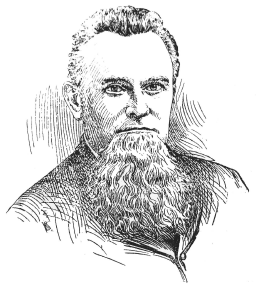
The idea of a German settlement in the upstate of South Carolina had been suggested as early as 1844 for immigrants from Germany coming to Charleston, South Carolina. Eventually, the German Colonization Society was organized on October 6, 1848 in Charleston. Its primary focus was to establish this German settlement. Under the leadership of John A. Wagener, the Society eventually purchased a total of 17,859 acres from Joseph Grisham for the sum of $27,000 on December 24, 1849. The town and the surrounding areas were all planned and the members of the German Colonization Society met in 1850 to draw for the first lots and surrounding farms. The new town was called Walhalla which is known as “The Garden of the Gods.” The name of the German Colonization Society was changed to the German Settlement Society in 1854 (which lasted until 1880) and the town of Walhalla became incorporated on December 19, 1855.

The German Evangelical Lutheran Congregation at Walhalla, Pickens District, South Carolina officially organized on November 20, 1853. The building of the St. John’s Evangelical Lutheran Church began in January of 1859 and was dedicated on March 17, 1861. Services were held in German and/or English until 1908 after which English became the standard. The clock was added in the belfry in 1889 and plain glass windows were replaced with the current stained glass in 1910.
Blue Ridge Railroad
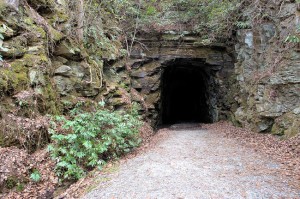
The workers for the Blue Ridge Rail Road were diverse. Many of those working at Stump House Tunnel were Irish. A town formed at this time, just above the east entrance to Stump House Tunnel called Tunnel Hill. The town was equipped with a Catholic church and school, a boarding house, bar rooms and stores. Wagener’s Powder Mill, at the base of nearby Issaqueena Falls, supplied black powder for the work. At one time, the population reached 1,282 people.
Death was not uncommon to the workers. Instances of workers falling down the shafts, dirt and rocks falling in, an explosion at the powder milling and scalding steam from the steam engines were reported in the Keowee Courier.
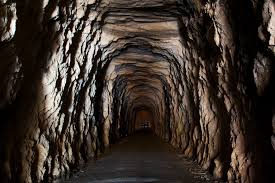
Prior to dynamite, black powder was used to blast rock such as the blue granite of Stump House Mountain. “Heading” Teams would drill “shot holes,” horizontally along what would be the top of the tunnel opening. These were followed by “Benching” teams who would drill vertical holes for blasting to extend the opening downward, thus creating a stair step effect. This effect is still visible at the end of Stump House Tunnel today.
Drilling was slow, progressing at an average of one foot per hour per hole. After about a foot of drilling, the drill would have to be re-sharpened. Three blacksmiths shops operated at Stump House Mountain to sharpen these drills.
By early 1860, due to lack of funding, work had ceased on the tunnels. The Blue Ridge Rail Road would eventually extend as far as Walhalla, but no further. The State of South Carolina had other issues to deal with, including financing a new State Capitol and soon thereafter, the War Between the States. Tunnel Hill was largely abandoned after work ceased on the tunnels and it is said that it was used as a hideout for deserters during the war.
The Stump House Tunnel is listed on the National Register of Historic Places.

